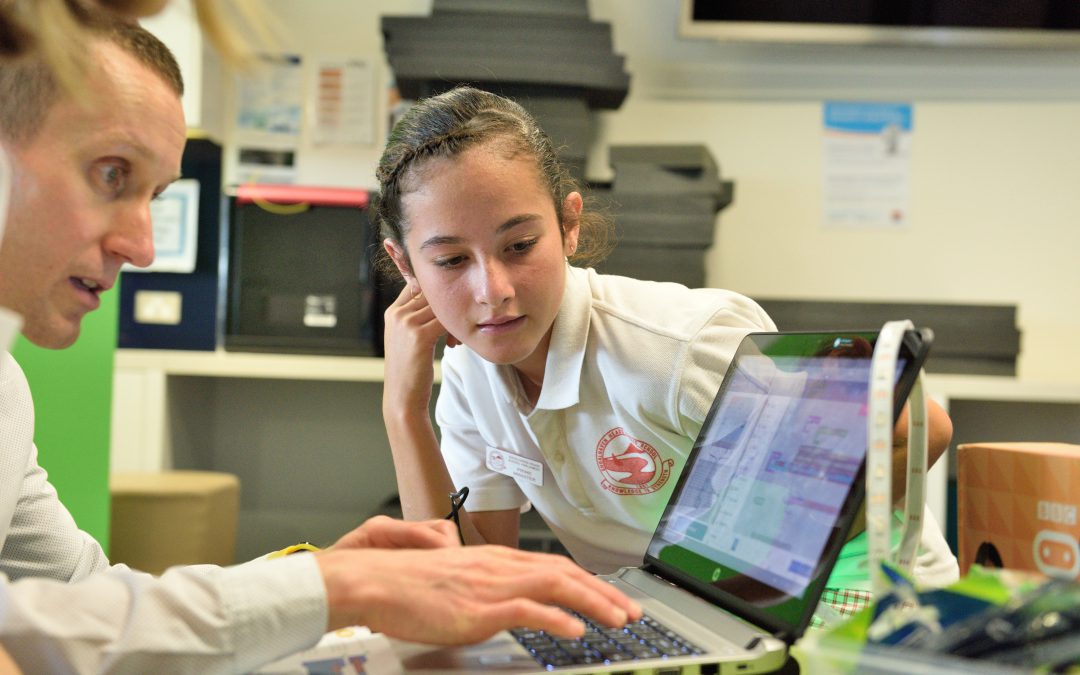Immersive learning through virtual reality. Digital lessons personalized for each student. Online games that teach important information while showing students that learning is fun. At the beginning of the 21rst century, these three things seemed like futuristic, far-off fantasies. Now, technology has evolved to make these and other dreams a reality in many classrooms. Here are the top five educational technology trends to look for in 2020.
Immersive Learning and Virtual Reality
According to EdWeek’s Market Brief, by 2021, over fifteen percent of schools in the United States will have a set of virtual reality (VR) classroom kits. Worldwide, over 70 million students will experience immersive learning through virtual reality. Students benefit greatly from VR’s ability to make theoretical information into an actual experience. For instance, VR kits allow biology students to travel inside the human body. This gives students a deeper, richer understanding of, for instance, how the circulatory system works, or how the human body fights off disease.
Gamification of Learning
Game-based learning, also known as gamification, is nothing new. However, gamification was often dismissed as frivolous in the past. Now, educators increasingly turn to game elements – including interactive video games – to motivate and inspire students. Game-based learning takes away the pressure and anxiety of earning a grade. It also shows students that learning is an exploratory process rather than rote memorization. Incorporating game-like elements can be as simple as replacing some grades with learning badges. For a more involved experience, try programs like Kahoot!, a game-based learning and trivia platform.
Artificial Intelligence Learning
Research shows that students learn best when lessons and activities are customized to their individual needs. However, it’s impossible for a teacher to fully tailor a different learning experience for each student in the classroom. From prep to grading to after-school responsibilities, teachers already feel stressed and overworked. That’s where AI learning comes into play. AI learning apps meet each student where they are, both in terms of their skill level and their learning style. A language learning app like Duolingo, for instance, helps students learn at their own pace by showing them when they need to practice certain skills. It also keeps track of all of the vocabulary words a student has mastered.
Social and Emotional Learning
Social and emotional learning, also known as SEL, helps students understand and manage their feelings. It also helps them develop empathy for others. Both of these things help students to develop positive relationships with others and to make sound decisions. SEL also helps students academically. According to the Collaborative for Academic, Social, and Emotional Learning (CASEL), students who experienced SEL lessons were less likely to drop out or act out behaviorally. Furthermore, SEL students excel academically, gaining an 11% increase in their grades. As students spend increasingly more time online, it’s essential to address digital citizenship in SEL lessons. Common Sense Education offers an e-booklet on SEL and digital citizenship that includes digital tools and further resources.
Safety and Security
As of November 19th, 2019, 46 school shootings had taken place in the United States. School safety and security, therefore, is an administrator’s primary concern. According to Forbes, in 2020, schools will seek to secure student data through blockchain and multi-factor authentication. Schools will also seek technology to help assess and address threats. Monitoring software like LearnSafe can detect multiple threats to school safety, from weapons to cyberbullying to self-harm. As such, LearnSafe assures a safe learning environment, which enriches each student’s educational experience.


